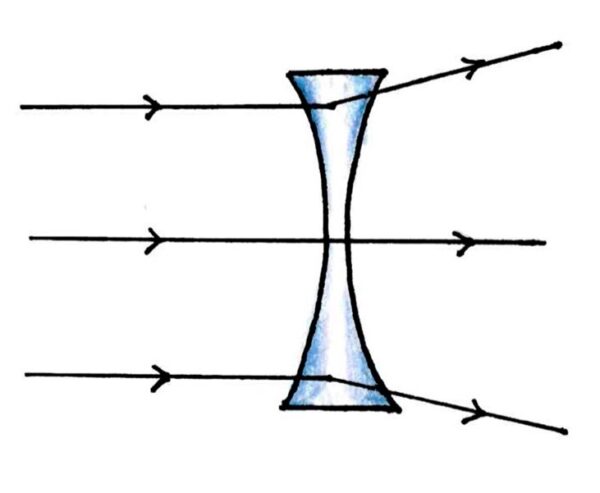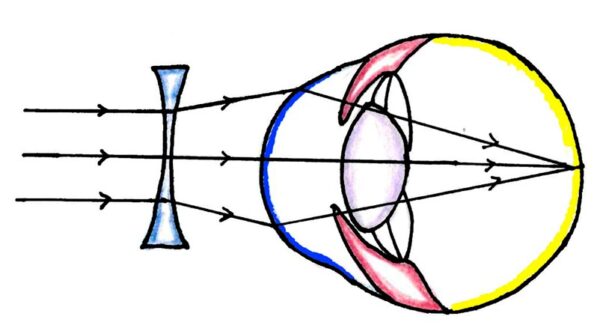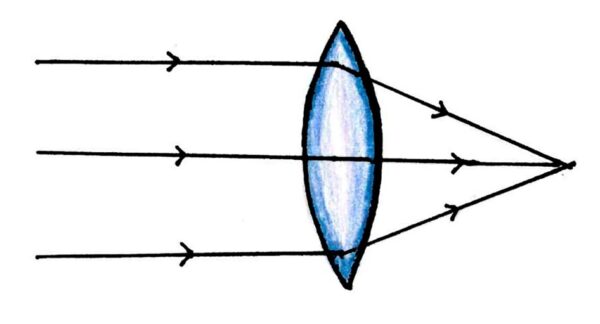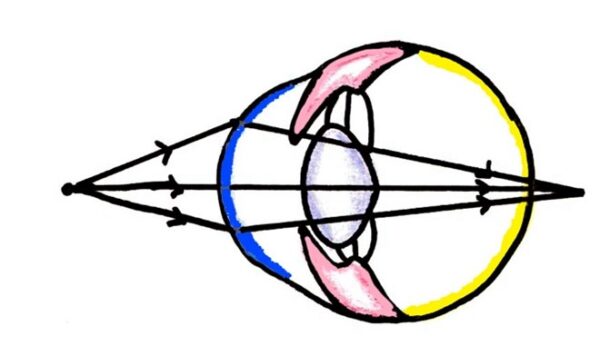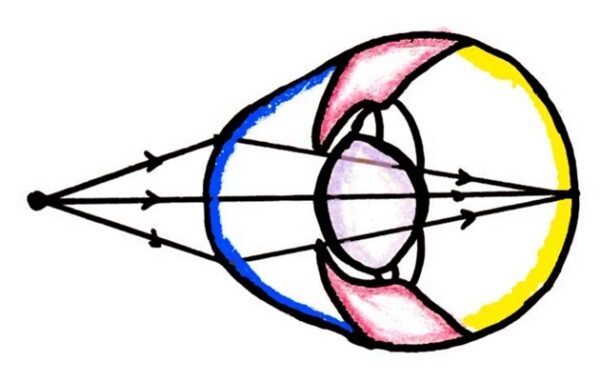- 📖 Geeky Medics OSCE Book
- ⚡ Geeky Medics Bundles
- ✨ 1300+ OSCE Stations
- ✅ OSCE Checklist PDF Booklet
- 🧠 UKMLA AKT Question Bank
- 💊 PSA Question Bank
- 💉 Clinical Skills App
- 🗂️ Flashcard Collections | OSCE, Medicine, Surgery, Anatomy
- 💬 SCA Cases for MRCGP
To be the first to know about our latest videos subscribe to our YouTube channel 🙌
Introduction
In order to efficiently navigate our surroundings, we need the ability to see clearly. This is a complex process dependent on multiple systems working together, including correctly aligned ocular anatomy and intact neural pathways, and so it is not surprising that many different types of problems can cause visual impairment.
The most common cause of reversible visual impairment worldwide is refractive error, which is now easily corrected in most cases with the advent of glasses, contact lenses and refractive surgery.1
This article will cover the basics of optics, focusing on the principles behind the different types of refractive errors and lenses used to correct them.
Emmetropia
Emmetropia is the ideal refractive state; parallel light rays from an infinite distance are refracted perfectly by the cornea and the lens so that it converges to a point directly on the retina (Figure 1). The convergence on the retina is what allows us to see clearly. Objects look distinct and sharp, instead of blurry and out of focus.
Refractive power is measured in Dioptres (D), and the typical eye has a total power of 58D, with the cornea accounting for 43D and the lens around 15D.
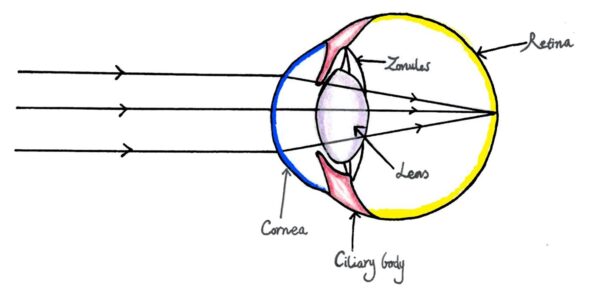
Ametropia
Ametropia is a broad term, which simply means there is a refractive error present. The main types of refractive errors are myopia, hyperopia, presbyopia, and astigmatism.
Myopia (short-sighted)
In myopic eyes, the parallel light rays converge too anteriorly, falling in front instead of on the retina, therefore the perceived image is blurry.
This can happen for two reasons. Most commonly, it is because myopic eyes are bigger than the emmetropic eye, which effectively means the refractive powers of the cornea and lens are too strong, and the light converges too soon. This is known as axial myopia.
Alternatively, myopia can also be caused when the refractive power of the eye is stronger than normal (also known as refractive myopia), which can happen in conditions that increase the curvature of the cornea (e.g. keratoconus), or the thickness of the lens (e.g. cataract).
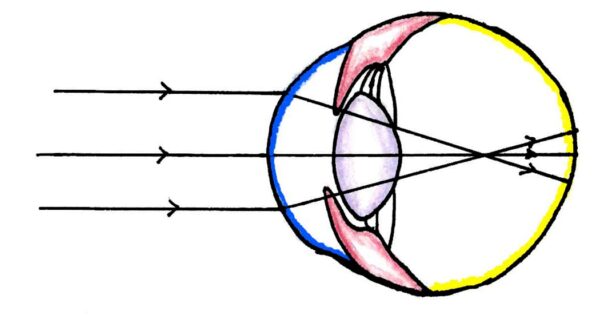
To correct myopia, we need to use a concave lens. Myopic eyes are essentially too powerful, and concave lenses will diverge light to decrease the overall refractive power of the eye (this is why it’s known as a ‘minus’ lens).
Hyperopia (far-sighted)
Hyperopia, or hypermetropia, is also known as being ‘far sighted’. Most hyperopic eyes are small and short, so the refractive power is too weak (the opposite of myopia), and therefore the light converges behind the retina.

In this case, we’d need to increase the overall refractive power by using a convex lens (which converge light and are known as ‘plus’ lenses), to bring the focus of the light forwards onto the retina.
Astigmatism
The surface of the cornea is rarely perfectly spherical, in most people, it is actually shaped like a rugby ball, with one axis more curved than others. This means that the refractive power of the cornea isn’t uniform: the power is greater where the axis is more steeply curved, and weaker where it is shallower.
This can make using glasses trickier. A normal spherical lens only corrects for one overall refractive error. We need to find a way to make the lens have varying powers corresponding to the shape of the individual cornea.
This is done by superimposing cylindrical lenses (simply known as cylinders) onto a spherical lens. In practice, there needs to be a careful assessment to work out the exact power and axis the cylinder needs to be placed to provide good vision.

Presbyopia
Assuming we have an emmetropic eye, which focuses light from the distance perfectly onto the retina. But what about seeing things close up, like reading?
To be able to focus on objects close in front of us, we need to increase the refractive power of the eye (by 4 dioptres, if reading at a 25cm distance for example). This is achieved by changing the shape of the lens, which is suspended on zonules and are in turn controlled by the ciliary muscles.
When the ciliary muscles contract, the zonular fibres relax (which sounds paradoxical) and reduce the tension on the lens, allowing it to transform into a more spherical shape, which increases its refractive power. This process is called accommodation.
As we get older, our lenses lose elasticity and become unable to change shape, hence why older people need reading glasses, which are convex spherical ‘plus’ lenses to add refractive power.
Reviewer
Mr Alastair Lockwood
Consultant Ophthalmologist
Queen Alexandra Hospital, Portsmouth
Editor
Dr Chris Jefferies
References
- Kim, T., Alió del Barrio, J., Wilkins, M., Cochener, B. and Ang, M., 2019. Refractive surgery. The Lancet, 393(10185), pp.2085-2098.



